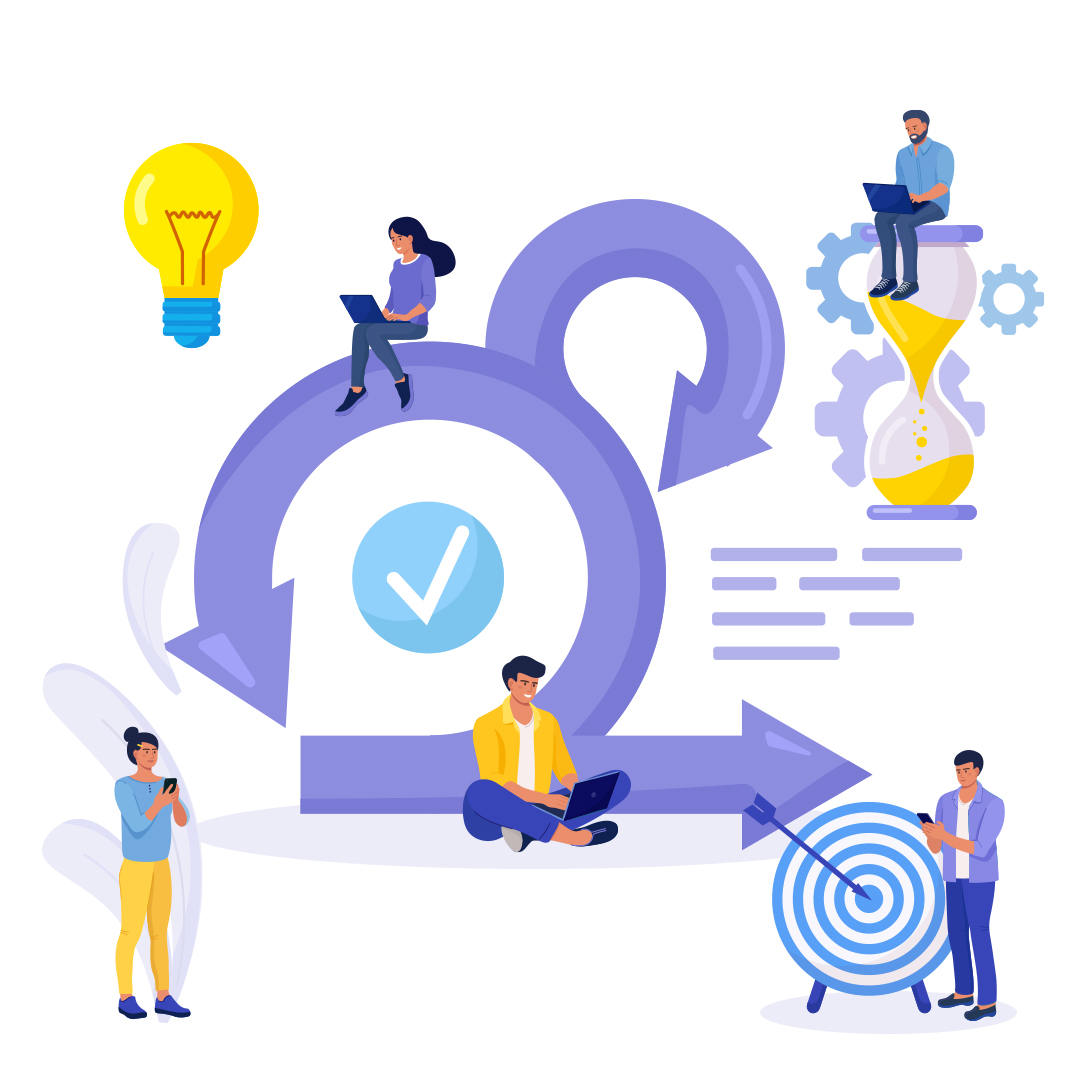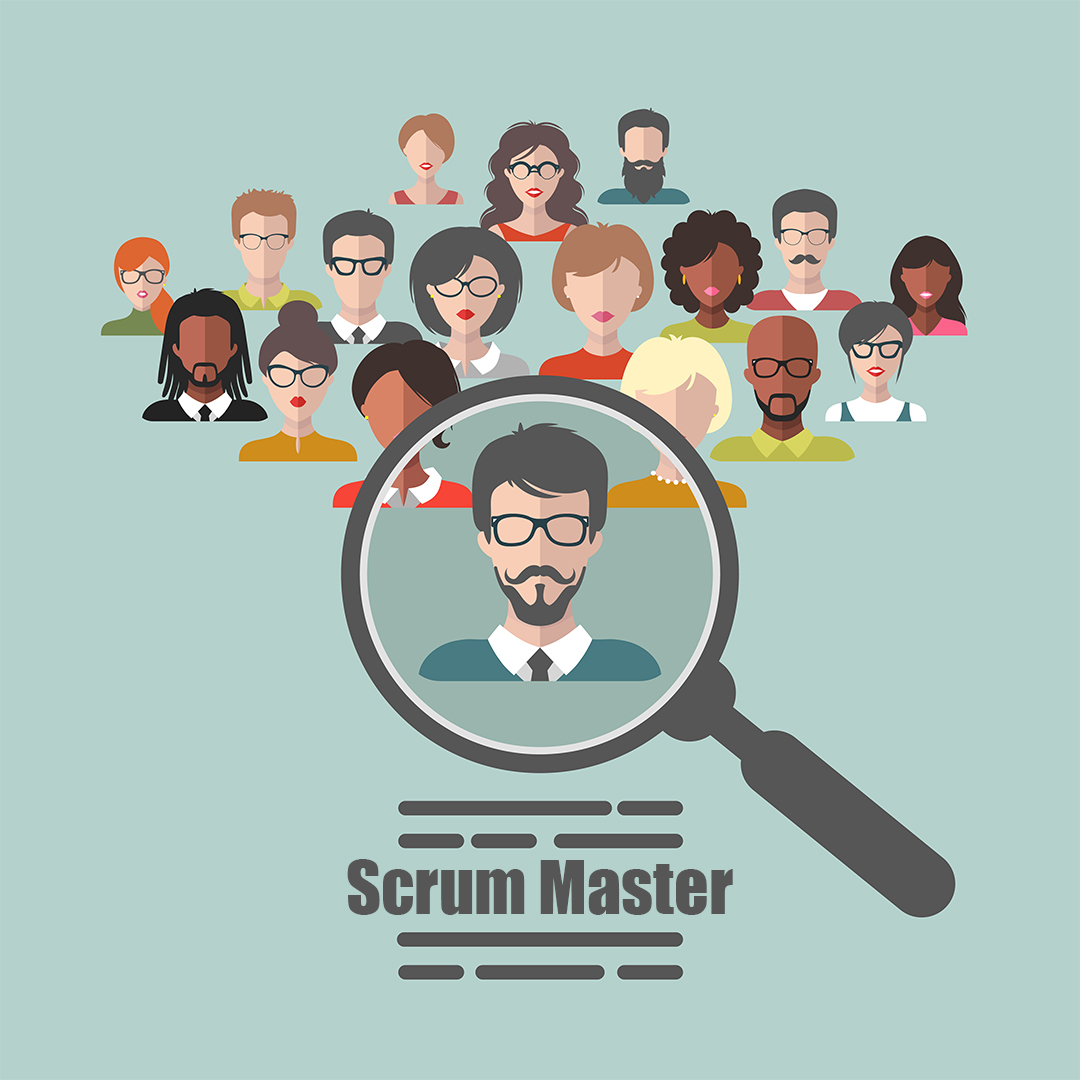Agile Scrum Methodology in Agile App Development – An Introduction
The Agile Scrum approach in Agile app development is one of the most widely utilized project management strategies today. The benefits of the method, such as increased business value, faster time to market, greater transparency among team members, and better quality management, are compelling enough for several businesses across a variety of industries to adopt the Agile mobile app development methodology in their daily work processes.
If your company is considering adopting the Agile process model because of the benefits that the Agile methodology for mobile application development provides, this article is for you.
But, before you go any further, you need to first grasp what Agile is and why it is the best methodology for mobile application development. If we compare Agile and Scrum separately, there is a tiny difference. The Agile mobile app development process is a technique strictly focused on an incremental and iterative Agile approach. Scrum, on the other hand, is simply an application or form of Agile methodology. Bi-weekly, incremental builds are sent to clients.

In other words, using Agile project management on mobile application development begins with describing users and writing a statement on the scope of challenges, opportunities, and values to be addressed. The product owner then captures this vision through Agile methodology in Android or iOS and collaborates with various teams to create high-quality outcomes.
Now that we've established the fundamental distinction between Agile and Scrum, there's one more item to think about before using a distributed Agile development approach. Let us first define Agile Scrum methodology, why adopt Agile methodology in mobile application development, and how it single-handedly propels the model far forward in the Agile versus Waterfall discussion.
What is the Agile Scrum Method in Mobile App Development?
Overall, the function of Agile app development for mobile is well-known, and Scrum is the most often utilized subdomain of the Agile process model. It has swiftly extended to handle large and difficult projects that would otherwise take a long time to complete. When it comes to the importance of Agile methodology for mobile application development, it is important to remember that mobile app developers create apps for devices with small screens, limited memory, and slow processing speeds. As a result, the adoption of Agile and Scrum mobile app development methodology encompasses programming, development, and project management, with the software development life cycle broken down into smaller modules.

The Scrum team, which is usually used by mobile application development services companies or Agile software development companies, divides their assigned work called product backlogs into actions that they can complete in two-week cycles, also known as "sprints." The team is required to build a functioning mobile app after finishing each sprint, which they will continue to work on and enhance.
Every sprint has a timetable that ranges from two to four months. Each of them follows Agile methodology in Android and/or iOS stages to improve the efficiency of this strategy and for the mobile apps.
Let's go on to learn about the different phases of Agile methodology in mobile application development.
1. Scrum Roles
How efficiently you divide duties determines how well you operate distributed Agile teams.
Product Owner - The person in charge of overseeing what the Agile app development team is working on and keeping the backlog up to date. They also examine the communication of the end user and team members.
Scrum Master - This person is in charge of ensuring that the team follows the Agile Scrum correctly. They are also in charge of overseeing the team's performance and resolving any issues that arise using Agile methodology for mobile application development.
Scrum Team - These are the people who carry out the tasks using the Agile mobile app development process. They are in charge of the project's development and testing, and as such, the team is considered to be self-organized, cross-functional, and Agile.
2. Backlog of Products
The product backlog, which is managed by the product owner, is a list of tasks that the team must complete using Agile methodology in Android/iOS. Modifications and priorities are established as needed. The backlog comprises a variety of papers that are constantly updated and used as needed.
The goal is to have a backlog list available before the sprint begins.
3. Backlog and Planning for Agile Sprints
Agile being one of the best methodologies for mobile application development determines which backlogs to target in the current sprint during this stage. The sprint backlog is a list of tasks that the team intends to do within the delivery period.
Sprint backlogs are often broken into actionable items, and the sprint begins after the team agrees on the backlog items.
4. Scrum Meetings on a Daily Basis
After completing the aforementioned Agile app development phases, the team begins working on the product backlogs, initiating a practice known as daily Scrum. Every day for 15 minutes, there is a stand-up meeting. Everyone in the team reports on the previous day's work and the day's plans at the daily Scrum. The daily Scrum informs everyone on the team on the overall status of the project.
5. Agile Sprint Review
After each Agile sprint, the team shows the stakeholders what they've created and examines the stages where they got stuck and which went well. The findings of one sprint generate the action statement for the following sprint using Agile project management on mobile application development.
6. Increment
The outcome of a Scrum is known as increment. The goal of everyone working in a Scrum is to provide a complete increment on its own. It must meet all of the quality requirements established by the product owner and team for progressing with Agile methodology in mobile application development.
7. Learn. Repeat. Improve
In the following sprint, the entire cycle is repeated.
Sprint Planning selects the next set of items from the Product Backlog, and the sprint cycle resumes for Agile app development. As the team completes the Sprint, the Agile Product Owner ensures that the items at the top of the product backlog get completed first in the following Sprint.
The short, iterative cycle provides the team with several possibilities for learning and improvement.
Why is Agile the Best Methodology for Mobile App Development?
Unlike traditional desktop programs for PCs, which may run for several years without any redesign, upgrade, or other changes, mobile apps should be substantially more versatile and adaptive for users.
Users' requirements may alter frequently, thus app owners should update the app whenever new modifications are required. Furthermore, hiring developers with Agile development proficiency is the ideal way to create a high-quality mobile app with little modifications.
1. Enhances the Quality of Mobile Apps
Since testing and quality assurance (QA) are included at every sprint throughout the Agile Scrum process, the app is verified at all stages, guaranteeing that it is produced in accordance with the quality standard, thereby securing its future in terms of high performance and acceptability.
2. Enhanced Customer Satisfaction
Agile methodology for mobile application development is predicated on incorporating customers at all stages. They have a clear view of the app's development because they are provided an app demo with each set of newly added features after each sprint.
3. Enhanced Transparency
Agile methodology for mobile application development is built on involving everyone in the mobile app development process. It includes the customer and everyone is aware of the exact work that has to be done and its state.
4. Quicker Return on Investment
Agile software or mobile app development methodology brings faster development and ROI. It allows businesses to start the development process faster and to work on several aspects of the process at the same time. When you combine this with the simplicity of testing the app function by function on the fly, you obtain a shortened app development period.
5. Rapid Transitions
Given the availability of sprints, it is easy to make changes in apps while using the Agile mobile app development process or strategy. The best thing is that there is no negative impact on development because the Scrum Agile application development technique eliminates revision, time, and expense issues. Now that you understand why you should utilize Agile methodology and what the benefits of Scrum are, let us move on to the aspects you should examine before implementing it in your mobile app development branch.
Considerations Before Implementing an Agile Development Approach in Your Mobile App Development Process
1. Do you have someone on your team who can act as a Scrum Master?
This is a critical component in Agile Scrum development. Before you can begin using the Agile Agile methodology in Android or iOS, you must first hire a Scrum master to oversee all of its procedures and challenges that the team experiences. The Scrum Master will be in charge of obtaining requirements from end users. He will also be in charge of running Scrum meetings and managing the backlog.
The function of a Scrum master is critical when using Agile project management on mobile application development. They would be solely accountable for the project's successful completion.

2. Is It Obvious What Your Team's Function And Duties Are?
The success of your Agile Scrum development methodology-based mobile app development process is largely contingent on how clear your team is about the duties they must perform and how eager they are to handle their role independently. If any of the team members are not at ease in their positions, the project will suffer many kinds of implementation problems and you will never be able to fully utilize Agile methodology in mobile application development.
3. Can The Agile Process Suit Your Industry?
One of the Agile Scrum guidelines to follow before embarking on an Agile app development strategy is to determine whether it is even essential. Although the Agile Scrum framework is utilized by many sectors throughout the world, it is not appropriate for all of them.
The development method is best suited for small teams that handle Scrum project management with unknown solutions, varying deliverables, and constant interaction with end users or clients. As a result, Agile methodology for mobile application development makes it ideal for projects dealing with marketing, software development, supply chain silos, or strategic planning.

Accounting, sales, and even the purchasing domain will not gain from it since they deal with established procedures or static deliverables. However, enterprises such as software development, IT, operations, marketing, and so on use Agile techniques, and the rate at which they adapt is expanding rapidly.
Finally, if you grasp the benefits of the Agile Scrum development technique and are willing to modify your work process, you should definitely go with it. However, be certain that your stakeholders and team are on board with the proposal of this methodology for mobile application development.
What Are The Best Practices For The Agile Scrum Process?
1. Always Collaborate To Establish The Product Backlog And Vision
The list of product backlog elements must be included in the product development process. It is recommended to create the product backlog and product vision concurrently. This keeps your developers and stakeholders in the loop with full awareness of everything while implementing this mobile app development methodology.
2. Sprints Must Make Use Of Burndown Charts
Experts recommend using burnout charts to track the success of sprints. They vividly demonstrate the quantity of work completed. Furthermore, these charts aid in recognizing specific Agile mobile app development process hazards associated with undelivered tasks.
3. Create Communication Guidelines
Being one of the best methodologies for mobile application development, uninterrupted communication is crucial to have a significant impact on workflow. If not addressed, it becomes one of the most difficult obstacles to growing Agile processes. There is one thing that can be done: create a communication plan based on the team guidelines. This is something that remote teams may utilize to make their processes more visible.
4. Perform Stand-Ups
Agile app development for project/product development accelerates when every member of the team is on the same page and aware of the status of work. These stand-up meetings, sometimes known as 'daily Scrums,' take place at the start of each working day and last no more than fifteen minutes.
Time to Get Your Agile Game On!
Given that we understand what the Agile app development technique is, we cannot deny that it has several benefits for both clients and the development teams. It ensures offering the greatest possible product to clients in the most efficient way possible by adhering to Agile principles. It is always recommended that you partner with a competent custom software development company to achieve your mobile app goals.



